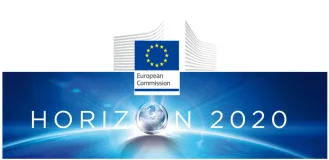MUSE GRIDS
Relevant project information
Dates
Project website
Role of CIRCE
Grant agreement number
Funded by

Description and objectives
The MUSE GRIDS project aims to demonstrate, in system-wide and real-life operating conditions, a set of technological and non-technological solutions adapted to local circumstances targeting local urban energy networks (electricity, heating and cooling, water, gas and electric mobility).
To this end, MUSE GRIDS aims to enable the maximization of affordable local energy independence thanks to optimized production management through end-user-centric control strategies, smart grid functionalities, storage and energy system integration with the objective of paving the way for market introduction in the near future.
To this end, two large-scale pilot projects will be implemented in two different European regions, in urban (OSIMO) and rural (OUD HEVERLEE) contexts with weak connection to the national grid and energy markets.
The objective is to validate the solutions while establishing mutual learning processes and providing best practice guidance for replication in other regions.
The two pilots will test different combinations of technological solutions according to local specificities and conditions and existing infrastructure and will involve all the value chain actors needed to efficiently implement system-wide projects, with citizens at the center of the MUSE GRIDS approach.
In addition, cross-cutting activities between the pilots will be dedicated to solving common technical, organizational, legal, regulatory, social acceptance and market-related problems, as well as evaluating solutions from a social, economic and business point of view.
Value proposition
The main objective of MUSE GRIDS is to provide a key contribution to the deployment of multi-energy management systems in the context of local energy communities. To this end, MUSE GRIDS will take full advantage of the potential of demonstrations, user interactions, partnerships and media.
As real-life results are key in a learning and development process, but also key to convince decision makers and other relevant actors, the decisive project level objective is to answer by demonstration in two real test cases (TRL7-8 - Oud Heverlee and Osimo) the following questions:
- How to interconnect local energy networks?
- How to use synergies in the energy system to maximize efficiency, reduce costs, CO2 emissions and energy losses?
- How to achieve affordable energy independence that maximizes mainly local self-consumption based on renewable energies?
CIRCE plays a role as a third party of EASE (The European Association for Storage of Energy) and its main service within the MUSE GRIDS project is the leadership of a specific task aiming to analyze the cost-effectiveness of the project.
To this end, CIRCE will conduct a comprehensive cost-benefit analysis of the integration of energy networks, studying not only the CAPEX, OPEX, estimated savings/revenues, but also the “social cost/revenue” of this approach.
Project partners
Rina Consulting Spa (Italia), Cartif, Siemens Gamesa, Energética S Coop, CIRCE, Eptisa Servicios de Ingeniería.


